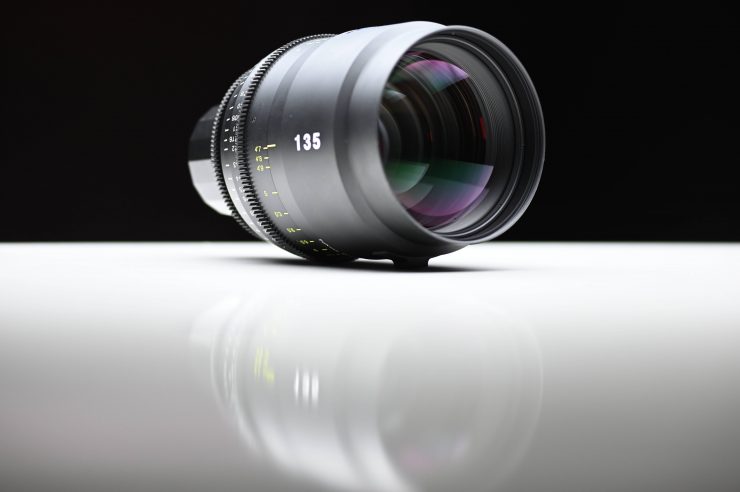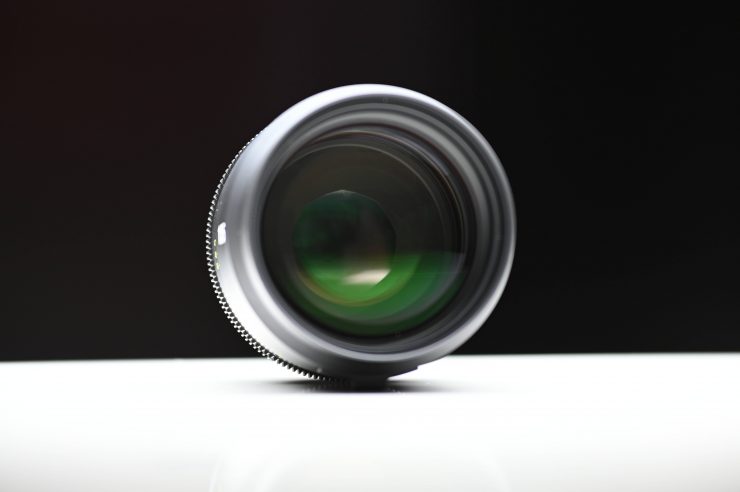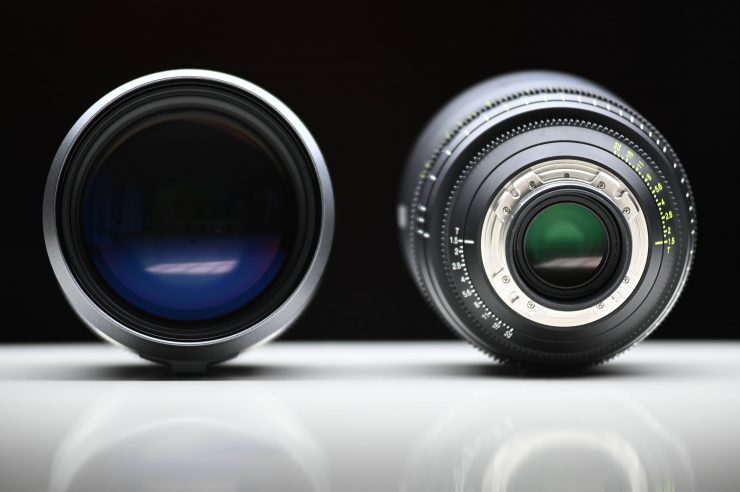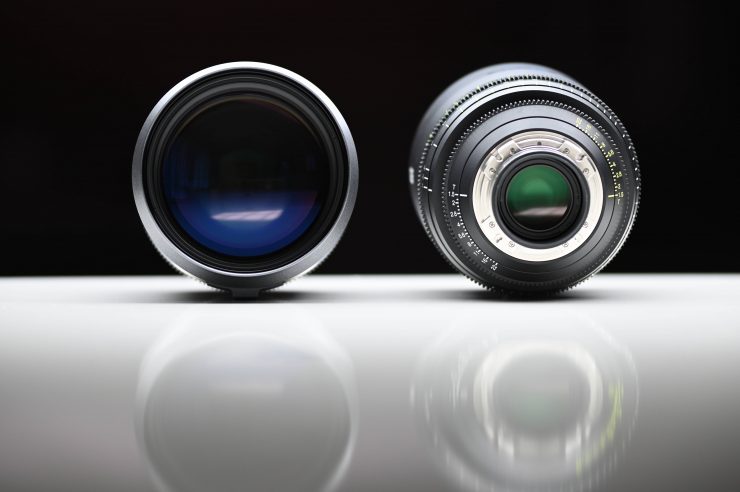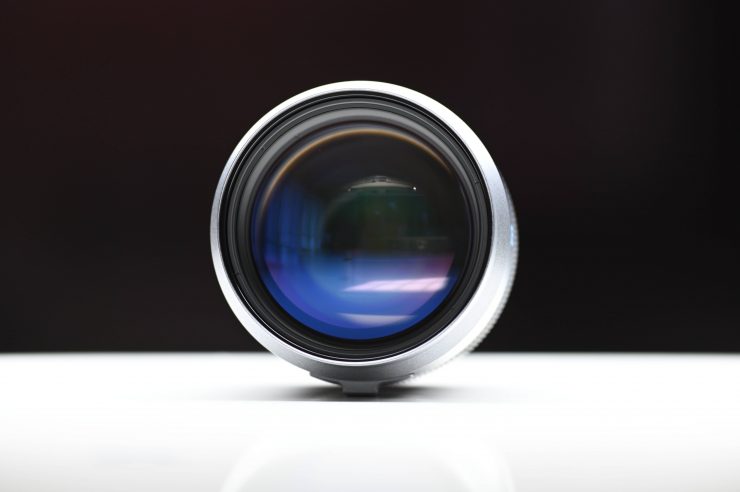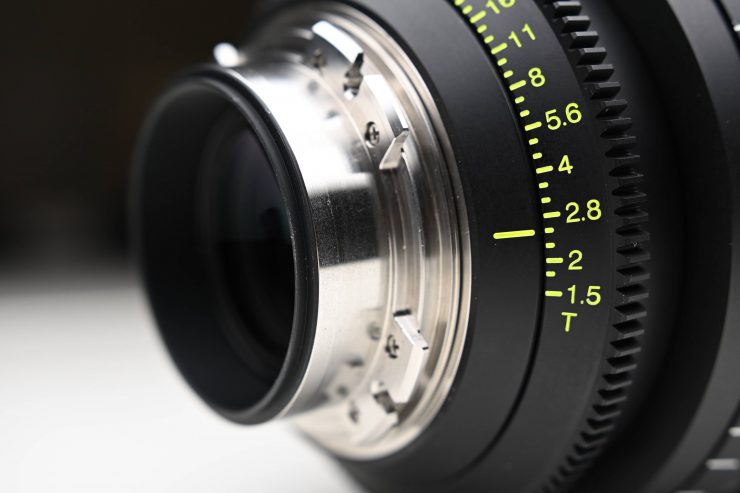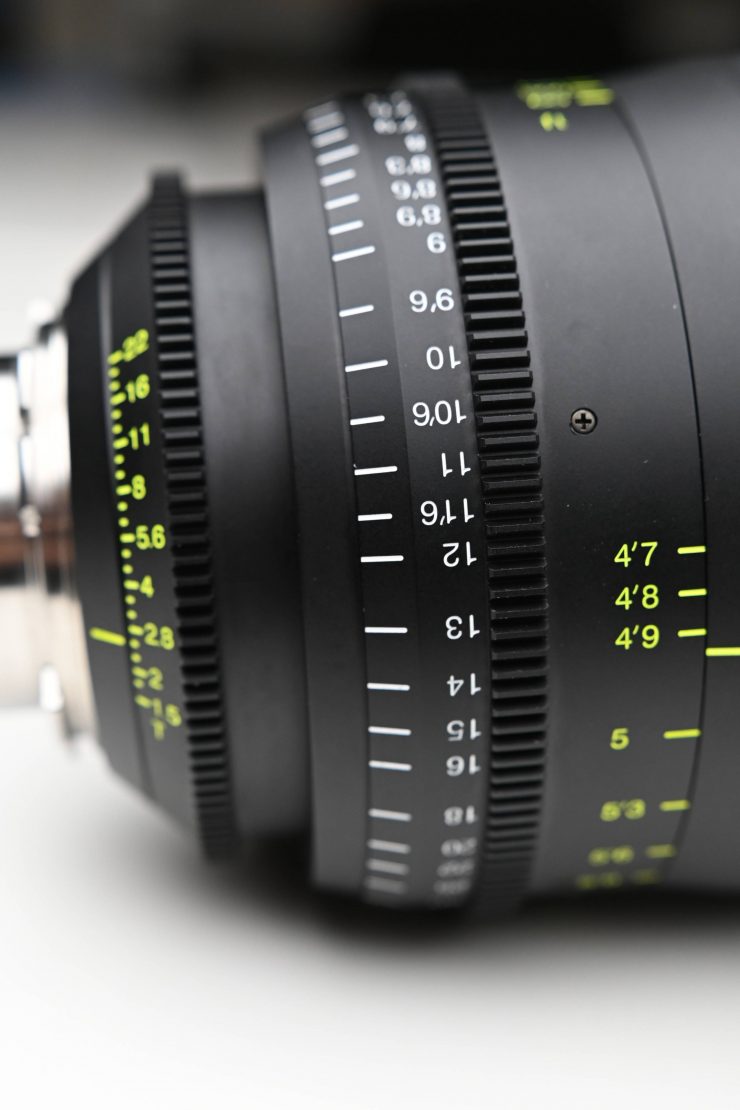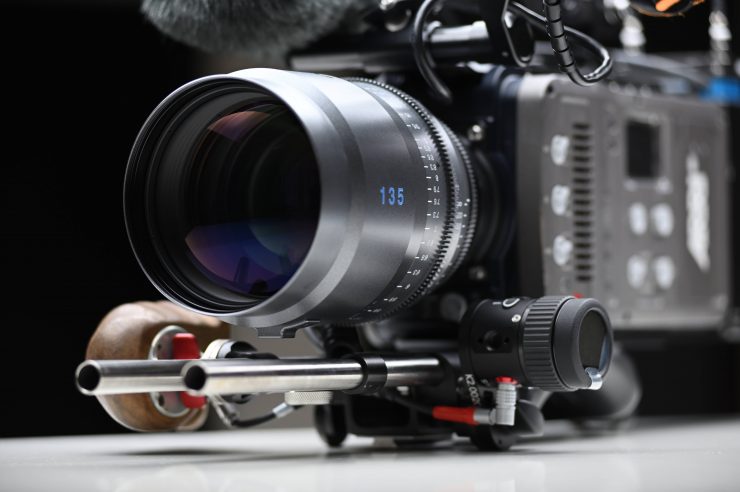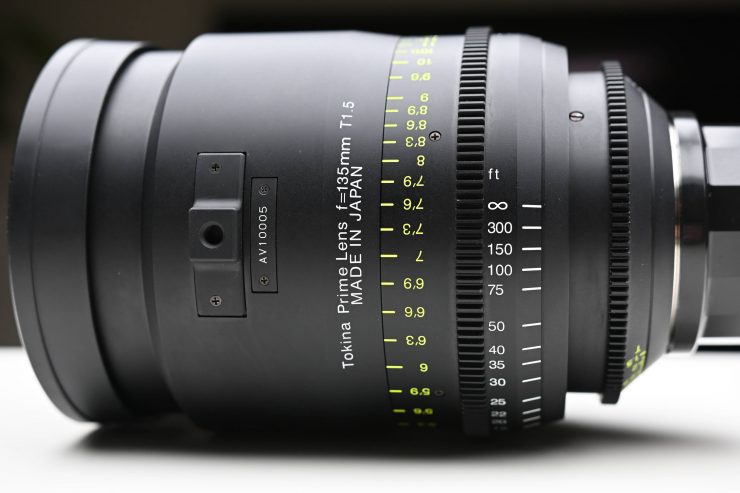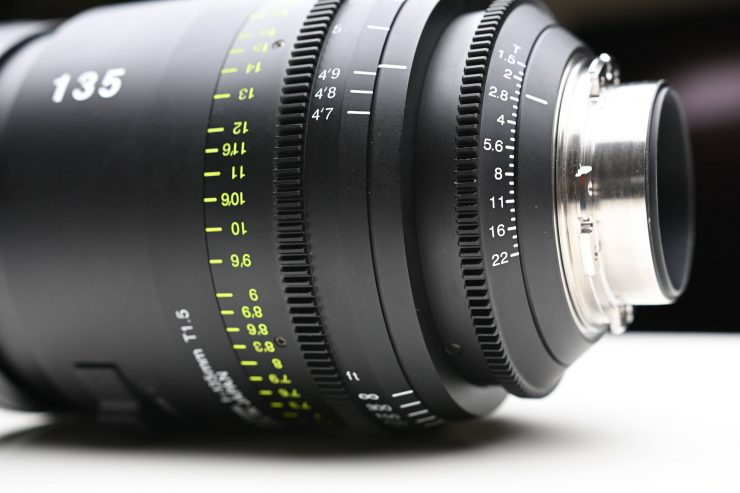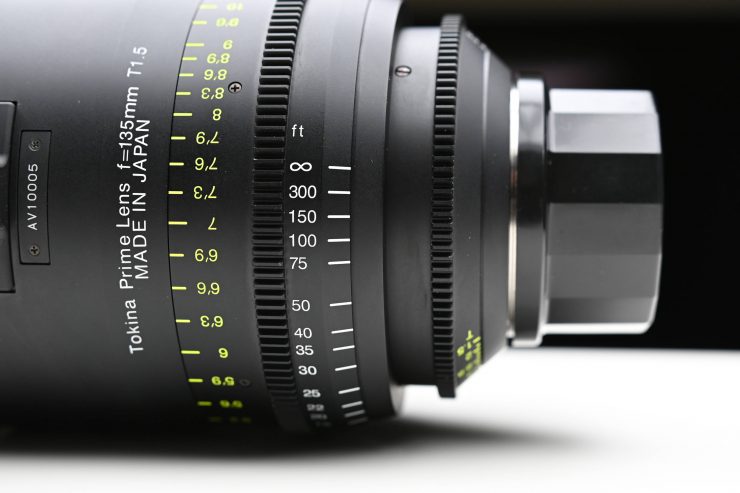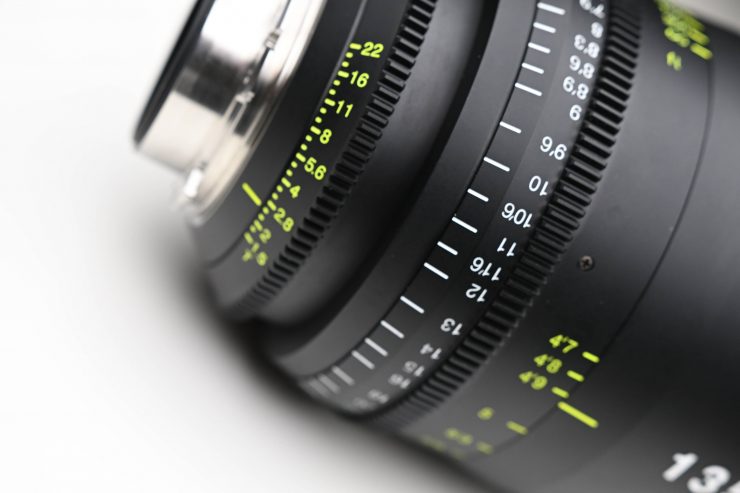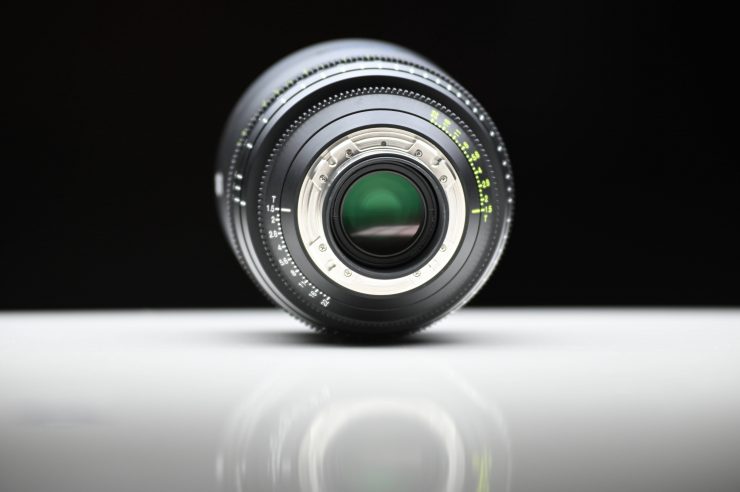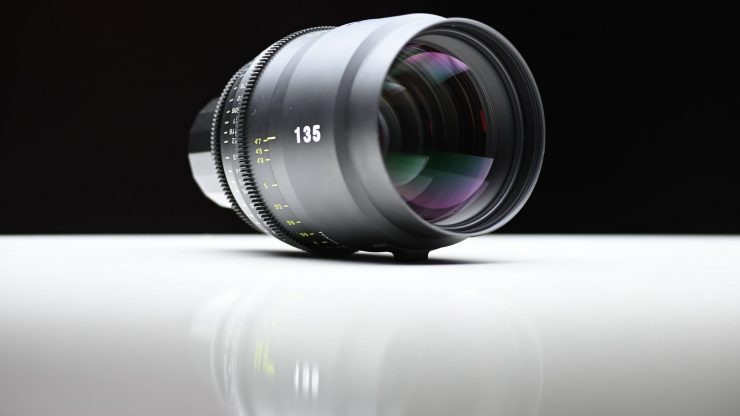
The Tokina Cinema Vista and Vista ONE 135mm T1.5 are the latest lenses in a series of very fast (T1.5) primes that cover a 46.7mm image circle. This large image circle coverage allows them to be used on full-frame sensors, and even on the slightly wider-than-full frame RED WEAPON 8K’s 40.96 x 21.60mm sensor. The 135mm now joins the 18, 25, 35, 50, 85 and 105mm lenses to form a 7 lens set.
Tokina and Zeiss are the only manufacturers offering a complete set of larger than full-frame coverage cinema lenses that are all T1.5. Well, Zeiss does have the 200mm T2.2, but all of the other 9 focal lengths are all T1.5.
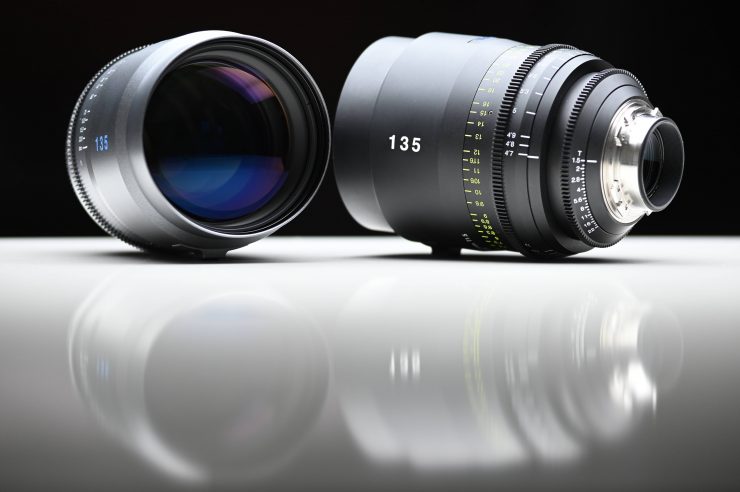
The Tokina Cinema Vista lenses are available in regular versions or in the single coated Vista ONE versions.
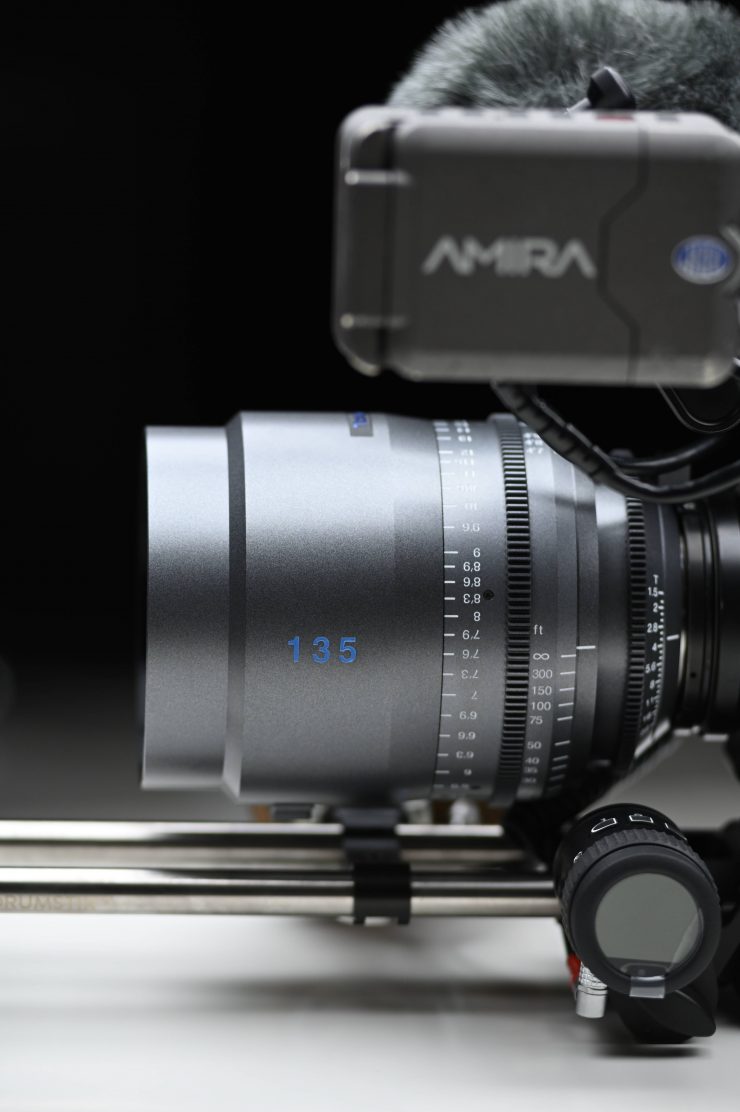
The 135mm T1.5 originally came as a bit of a shock as Tokina told us when they introduced the 105mm T1.5 that it was too hard to make a 135mm with a T1.5 aperture.
Key features
- Fast T1.5 T Stop
- Nearly no breathing
- Use of aspherical elements and modern coatings
- Exceptionally low chromatic aberrations
- Newly designed large-format cinema glass
- Image circle of 46.7mm
- 114mm front outer diameter
- 9 bladed iris
- Shimmable mount
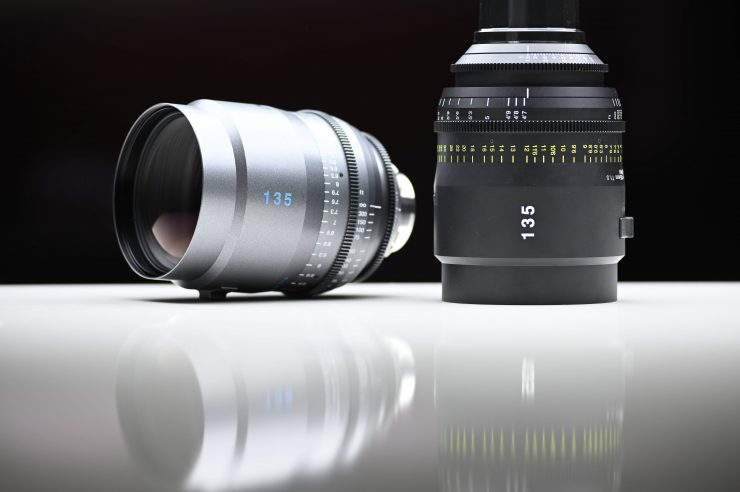
The biggest selling points for the Tokina Cinema Vista series are that they are all T1.5, have virtually no breathing (apart from the 18mm), feature a 300-degree focus rotation, and cover an image circle of up to 46.7mm. While some of the newer cinema primes from companies are rehoused from stills glass, Tokina has purpose-built these just for cinema, with all new elements inside. They are also color-matched for consistency across the range.
Having a consistent T stop across all of the focal lengths is paramount when working on larger productions because you don’t need to light to your slowest lens. Consistent T stops save time.
I have previously reviewed the 18, 35, 50, 85, and 105mm T1.5 lenses. From my experience using the Tokinas I found that they provide beautiful imagery, are tack sharp even wide open, and have almost no focus breathing. I personally think that the lenses are very underrated compared to a lot of the competition. The only real downside to them is their weight, and this alone could be enough to put some potential buyers off.
Last year I reviewed the 18mm T1.5, which is an incredible feat of engineering. Not only is it wide and fast, but the large image coverage means that the lens has no problems being used on the RED DSMC2 Monstro 8K VV, ARRI ALEXA LF, or Sony Venice. The image circle of light is almost 59mm in diameter and will cover the ARRI Alexa65 in 5K mode. Having such a massive image coverage gives you peace of mind that you are buying something that is fairly future proof (if there is such a thing).
Tokina Cinema Vista 135mm T1.5
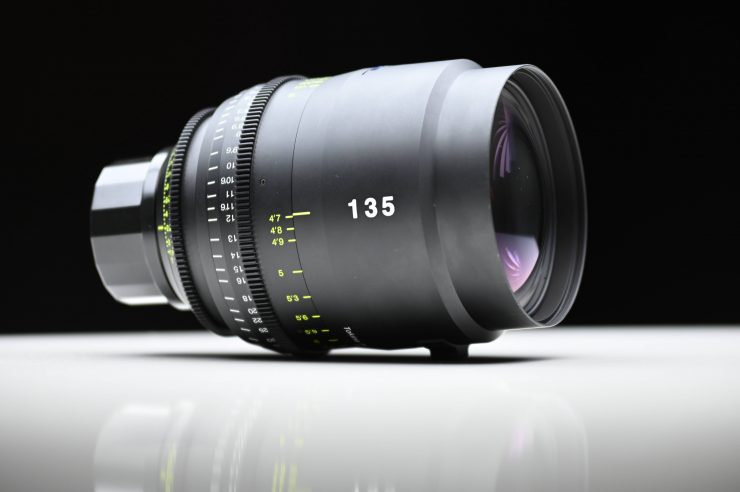
The Tokina Cinema Vista 135mm T1.5 shares the title of the fastest full frame 135mm cinema prime lens in the world with the ZEISS Supreme Prime 135mm T1.5. The Zeiss covers an image circle of 46.3mm which is just a smidge smaller than the Tokina.
The Tokina 135mm fully covers the Alexa65. The breathing is less than the Zeiss. The Zeiss comes in around 2% which is good. The Vista is less than 1%. Basically zero breathing.
Optical Design
The optical design consists of 14 groups and 16 elements. That’s a lot of glass! The minimum focus distance is 1.4m (4’7′) and the lens has 9 aperture blades.
Size & Weight
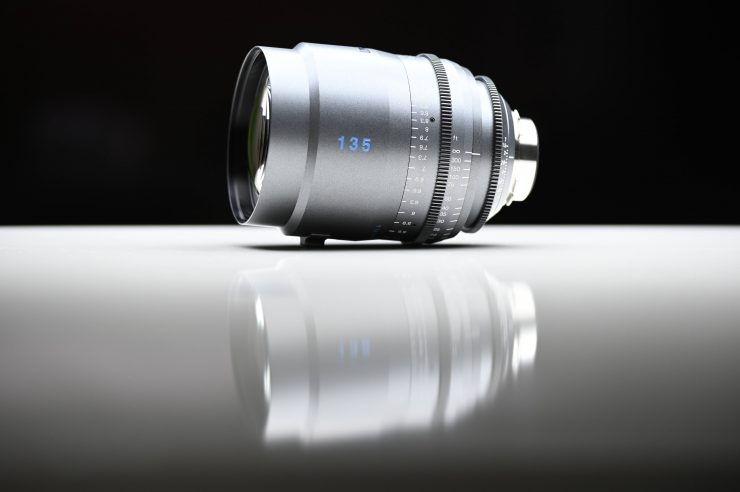
The 135mm T1.5 is a heavy lens, weighing in at 2.99kg (6.59lb). That makes it the heaviest lens in the Cinema Vista series.
Consistency
Just like all the other Cinema Vista lenses the 135mm shares the same form factor, lens gear position, focus rotation (300°), and front barrel diameter (114mm) as the other Tokina Cinema Vista and Vista ONE prime lenses. The 135mm also has threading on the front of the lens to accommodate 112mm screw-on filters.
Build Quality
At 2.99kg (6.59lb), the 135mm T1.5 is a heavy piece of glass and in that regard, it feels very solidly made. The outside of the lens casing is a hard metal and while it has been designed in a matte black finish to avoid light reflecting off it, it is susceptible to marks and scratches.
The Vista ONE versions are a dark metal grey color.
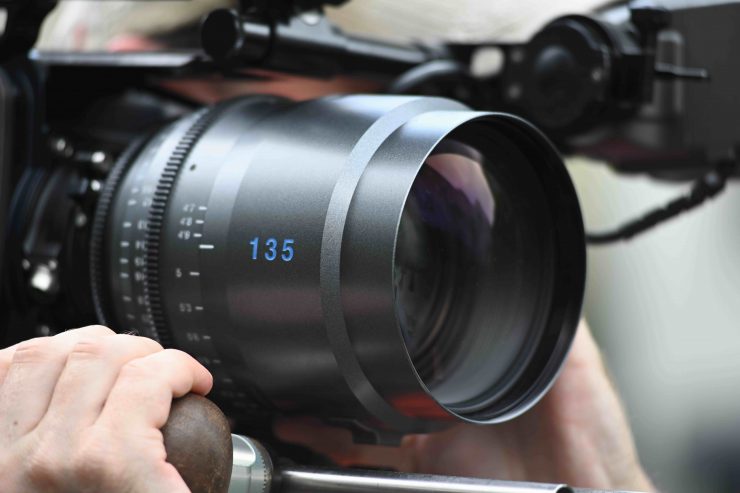
The iris and focus rings are beautifully weighted and their operation is smooth. As I already mentioned, the focus rotation is 300 degrees, which is great if you are using a follow focus, but if you are pulling focus by hand you will find it difficult going from the minimum focus to the maximum focus point.
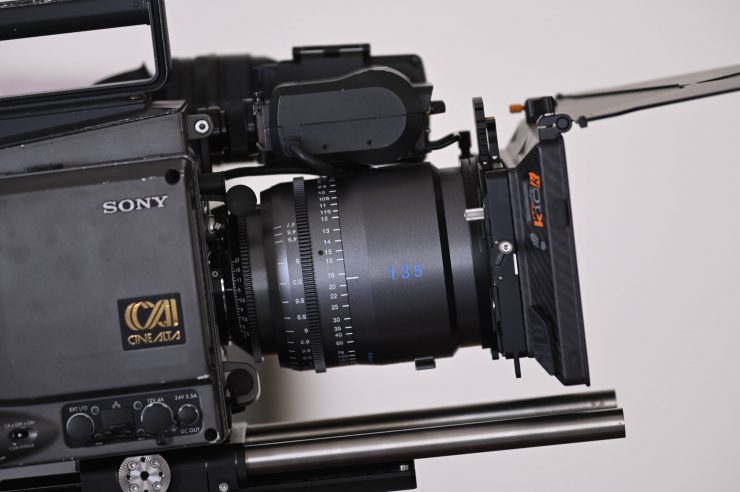
There is a built-in lens support adapter that takes a 1/4-20″ thread. Being as heavy as the lens is, it’s probably a good idea to use a lens support, especially when using a version of the lens that isn’t PL mount.
Markings
The 135mm T1.5 Vista Cinema, just like all of the other lenses in the series has clearly marked focus and iris scales on both sides of the lens. There certainly are a lot of markings and some cinematographers or camera assistants may think there are too many. What I did discover from going into rental houses here in Japan and talking to camera assistants and cinematographers who work here is that they actually like having lots of marking on lenses. As the lenses are made in Japan this is probably why there are so many markings.
The markings are easy to read and can be seen on both sides of the lens. On the operator’s side, they are white in color, and on the cameras assistants’ side they are a fluoro yellow.
Mounts Available
The lens is available in PL, Canon EF, M4/3, Sony E Mount, as well as ARRI LPL. The mount is changeable, but unfortunately, this is not something you can do yourself.
No Breathing?
I tested out the lens by doing large focus throws and to my eye, there is no breathing. No lens technically has zero breathing, but very good cinema glass has such minimal amounts that it is virtually impossible to see. What you do see is some perspective shift which is normal when refocusing a lens.
According to Tokina, the lens breaths less than the Zeiss Supreme Prime 135mm T1.5. The Zeiss comes in around 2% which is still extremely good. The Vista and Vista ONE 135mm have less than 1%.
Image shift is the change in location of a fixed point after a focus rack. It should be in the same spot after you rack focus.
Perspective shift is the focal length of the lens being modified by the movement of the optics. A slight change in focal length may happen if there is a floating element that moves and is not properly corrected for in the design. Certainly, the great majority of lenses have this issue. It’s also tenths of a mm so not overly noticeable.
Focus breathing is a change in image size so the size of object will get larger as it moves out of frame. That is reproduction size.
In summary,
Fall off and Vignetting
The lens has a really nice fall off and it throws a 54mm light circle so you get a nice amount of illumination across your image without seeing any real signs of vignetting.
I couldn’ see any noticeable illumination fall off when I tested the lens on a Kinefinity MAVO LF.
Sharpness
This is where the Tokina Vista lenses excel. All of the focal lengths that I have tested have been extremely sharp, even when used wide open at T1.5. The 135mm is no exception, and it is super sharp even at T1.5 on a full-frame sensor. It is slightly softer out towards the edges of the frame, but not in a way that is distracting or optically bad. Considering the image coverage and fast aperture of this lens, I’m amazed at how sharp it is. Tokina has done an outstanding job given the technical requirements this lens had to fulfill.
As you can see in my tests, sharpness does improve as you stop the lens down, but the difference between when the lens is set at T1.5 and T8 isn’t as huge as you may think.
I also tested the lens out on
Lens Flare
On a full-frame sensor, the lens flare is very well contained, even when used wide open at T1.5. Stopping down does help in reducing lens flare, but regardless of what aperture you are using the lens still manages to maintain good contrast.
What I like about the Vista ONE versions of these lenses is that the single coating allows for a reduction in contrast and increase in lens flare when off-axis lighting is used. When the lens is on-axis to the light source, the lens retains contrast and normal lens flare properties.
The single coating technology used on the Vista ONE lenses provides a good compromise between creating a unique look, and still maintaining contrast. This offers advantages over uncoated lenses that may provide too much reduction in contrast and less image control.
By having a single coating and not multi-coatings like their Vista cousins, you will get flares that lean more towards the blue/purple end of the spectrum.
The flares you do get are very pleasing and they certainly do give the lens some character. Lens flare is very much a personal thing and whether you like the flares these lenses produce only you will know.
Chromatic Aberration
The lens doesn’t have any real-world visible chromatic aberration. If you zoom into the image by 300% when used at T1.5 there was a tiny, tiny bit, but it’s barely visible. As soon as you stop down to even T2, what tiny bit of chromatic aberration there was, completely disappeared. This lack of chromatic aberration at T1.5 is extremely impressive.
Bokeh
Nice bokeh is something you want if you are purchasing a fast lens. The bokeh produced is nice and round and you can create some beautiful out of focus areas by using the lens wide open. Even wide open at T1.5 you don’t get any chromatic aberration or see any color bleed on the bokeh.
The bokeh is not only round when used at wide-open apertures, but it also has a nice softness to it. Once you stop the lens down past a certain point you will start to get more of a “stop sign” looking bokeh.
Color Tone
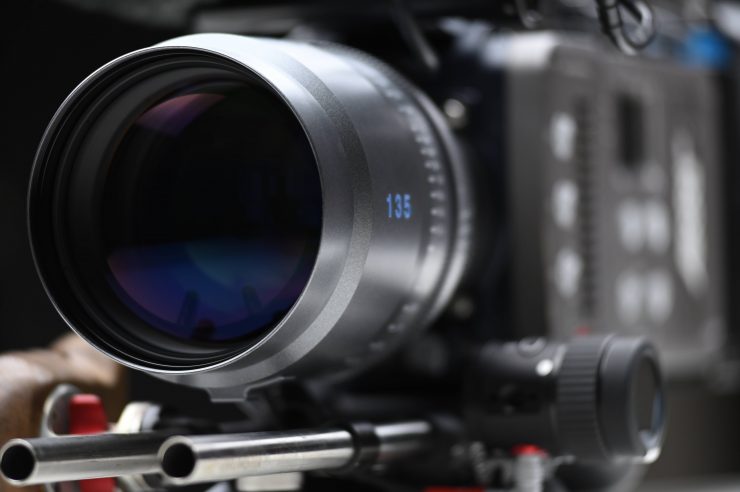
The Tokina Cinema Vista primes certainly lean more towards warm tones than say lenses from Zeiss. They have a nice amount of character and don’t appear too clinical and uninspiring. What look you actually prefer from a lens is entirely going to come down to personal choice. I really liked the warmer tones of the Tokina lenses as I found the color reproduction matched very well with my Angenieux Optimo Style zooms. This allows me to use a combination of zooms and primes while still maintaining a fairly consistent look.
The color tone of a lens is really something you should look at closely if you are going to be using both prime and zoom lenses from different manufacturers. Certain prime and zoom lenses work better together than others. What will work for you will also depend on what camera you are using.
Real World Thoughts
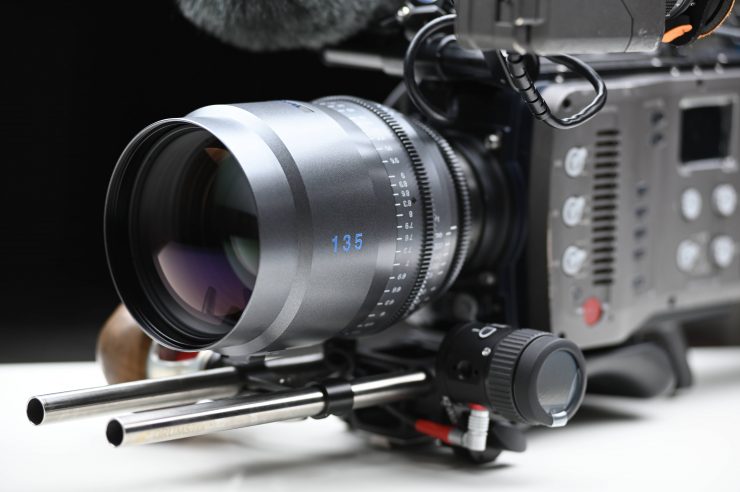
The 135mm T1.5 is a very impressive lens. It punches way above its class and its performance is right up there with lenses that cost considerably more money.
With a fast 135mm lens, you can create a beautiful separation between your subject and the background. This allows you to use the compression that a 135mm focal length offers with the ability to stop it down and still get very soft and pleasing out of focus background. I wish I could have shot more content for this review but I suffered a pretty bad sporting injury that thwarted my plans.
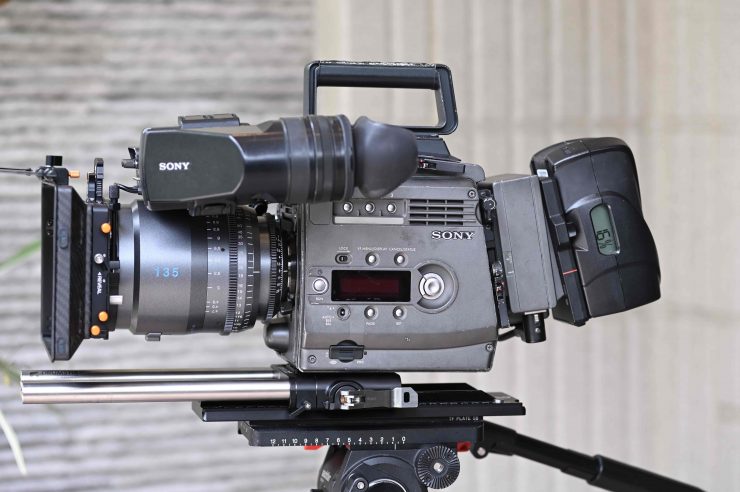
There is certainly no doubt about the optical performance of this lens. It is razor-sharp, and produces beautiful bokeh.
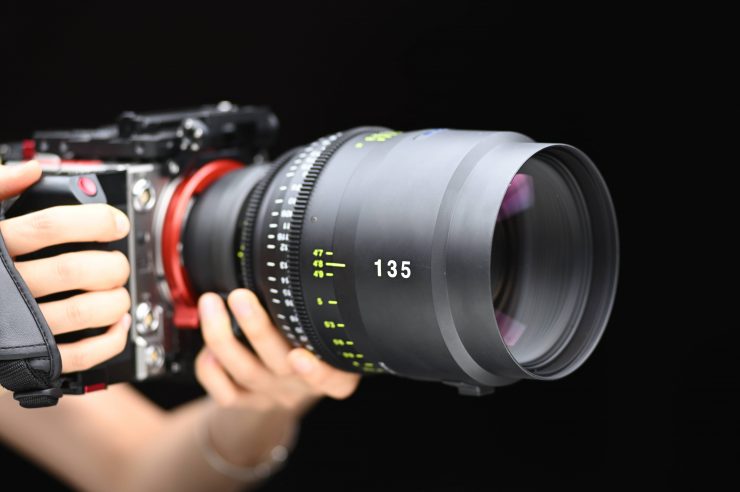
The downside to having this fast aperture is you have to be willing to live with the size and weight of this lens. Using a prime lens that weighs in at 2.99kg is no easy task, especially if you are working by yourself. This weight constantly had me in a love-hate relationship with the 135mm T1.5. I loved the images I could get, but I hated lugging the lens around on shoots.
Price
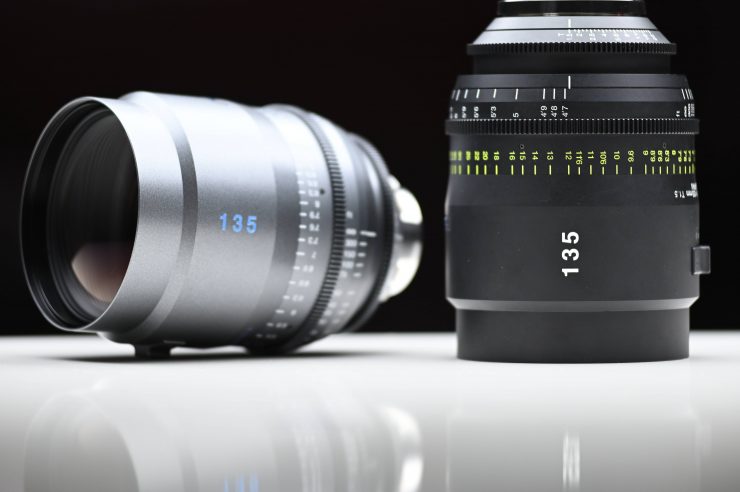
The Tokina 135mm T1.5 Cinema Vista is not cheap, it retails for $8,499 USD. The Tokina 135mm T1.5 Vista ONE costs $11,049 USD. That may sound like a lot of money, but it makes it very affordable if you compare it against the Zeiss Supreme Prime 135mm T1.5 which costs $23,925 USD.
Competition
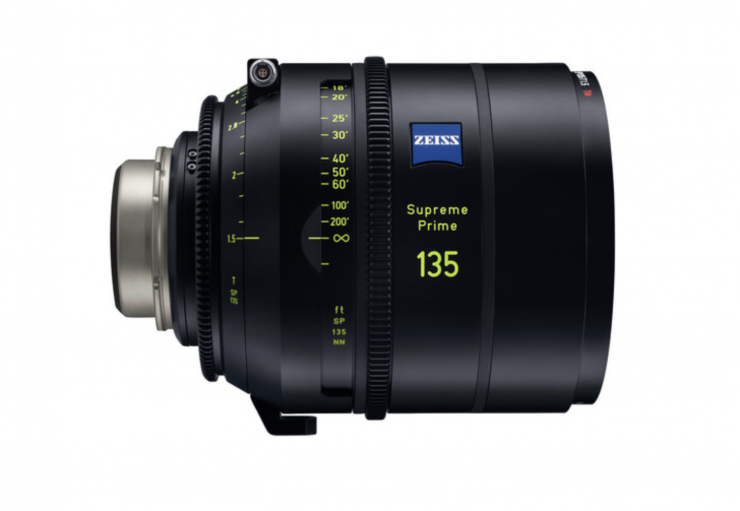
There is a lot of competition in the full frame cinema prime marketplace. Numerous established brands such as Zeiss, Canon, Sigma, Cooke, Leitz Cine, and ARRI all make full frame cinema prime lenses. The prices of all of these options vary dramatically from just a few thousand dollars all the way up to just below $30,000 USD.
As far as direct competition goes, there is only the Zeiss Supreme Prime 135mm T1.5 which I have already mentioned. So let’s compare the two lenses on paper:
| TOKINA 135mm T1.5 | ZEISS 135MM T1.5 | |
| IMAGE CIRCLE COVERAGE | 46.7mm | 46.3mm |
| WEIGHT | 2.99 kg (6.59 lb) | 2.27 kg (5 lb) |
| LENGTH | 7.36″ / 187 mm | 5.75″ / 146 mm |
| IRIS BLADES | 9 | 18 |
| FRONT DIAMETER | 114mm | 114 mm |
| FRONT FILTER THREAD | 112mm | None |
| MFD | 1.4m (4’7′) | 1.35 m (4.43′) |
| eXtended Data Technology | NO | Yes |
| PRICE | $8,499 USD | $23,925.00 |
Other similar focal length options include the Zeiss 135mm T2.1 CP.3 prime, Schneider-Kreuznach 100mm T2.1 Xenon FF-Prime, Sigma 135mm T2 FF High-Speed Prime, and Canon CN-E 135mm T2.2 L F Cinema Prime Lens,
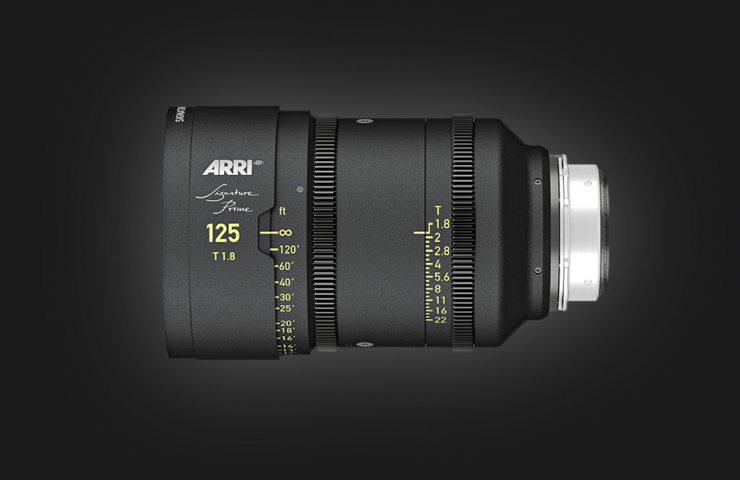
At the higher end, there is the ARRI 125mm Signature Prime LPL Mount is T1.8, but it also costs $28,400 USD. Leica also has the Leitz Cine THALIA 120mm T2.6 Cine Lens, and Cooke makes the 135mm S7/i Full Frame Plus Prime T2.0 ($26,500 USD).
Do you need a full-frame cinema lens?
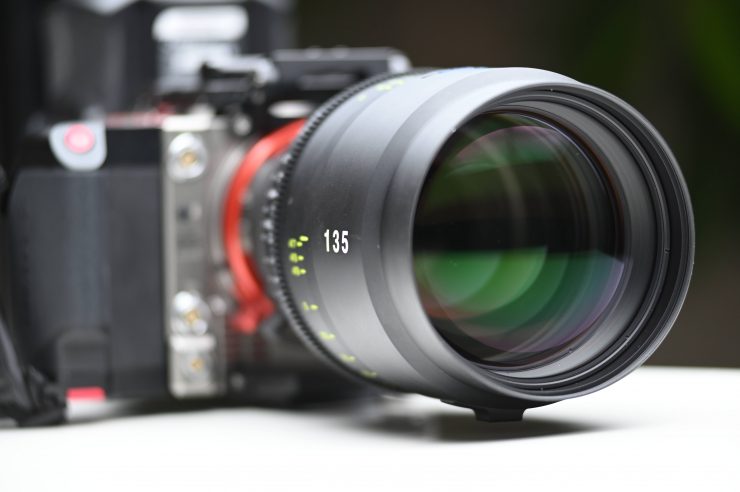
Let’s face it, a lot of us are not shooting on the RED DSMC2 Monstro 8K VV, or an ARRI ALEXA Mini LF, although in saying that, there are now quite a few affordable full-frame digital cinema cameras such as the Canon C500 Mark III, Sony FX9, Kinefinity MAVO LF, and the Z CAM E2-F6 Full-Frame 6K and 8K.
There is certainly a push by manufacturers to bring out full-frame and larger digital cinema cameras, so lenses that cover full-frame and larger sensors are going to become more popular.
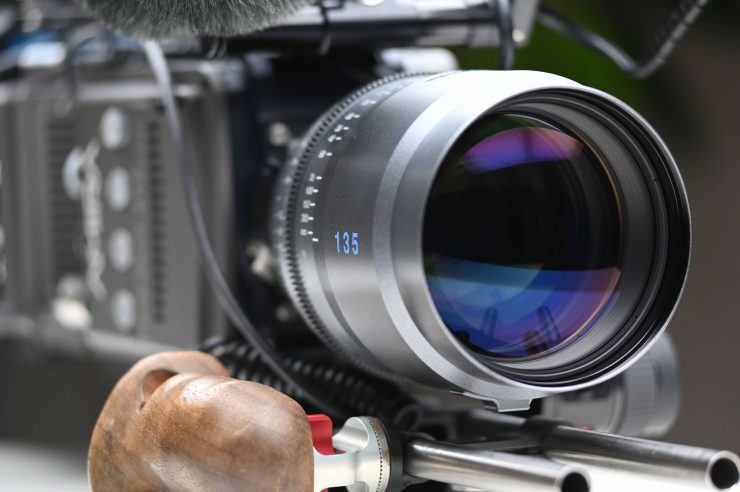
I don’t generally shoot on a full-frame digital cinema camera, but I have still chosen to invest in full-frame prime lenses. I did this because the industry is moving quickly and I would prefer to spend my money on something that is going to be slightly more future proof than a lens that just covers an S35 sensor. If you do happen to own an S35 camera system that can utilize a speed booster then you would be able to take full advantage of the 135mm T1.5. Of course, you could use this on a full-frame DSLR or mirrorless camera, but how many people are really going to use a lens that costs 3 to 4 times more than their camera.
Investing in a full-frame lens is going to cost you a lot more money than buying one that just covers S35 sensors, and you need to factor that in when considering what to buy.
Conclusion
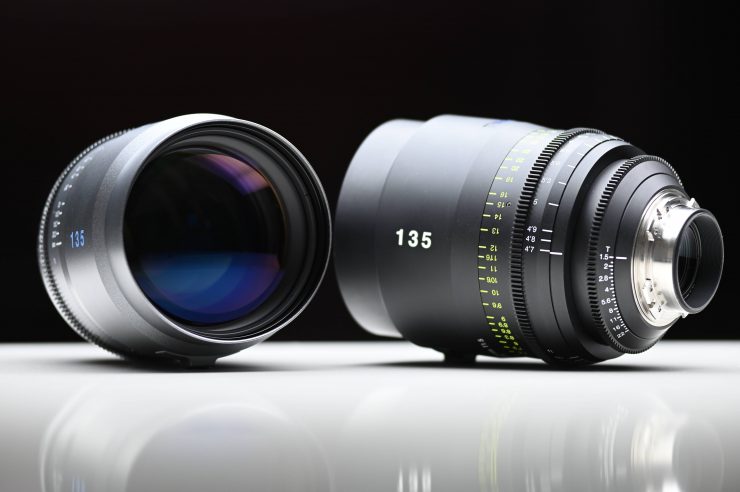
The Tokina 135mm T1.5 Cinema Vista and Vista ONE are beautiful lenses. The caveat is that Tokina hasn’t compromised on performance, and to obtain that performance, the lenses are large and heavy. You can’t take shortcuts with optical design and if Tokina had have opted to make the lens lighter and smaller they would have had to sacrifice image performance and the speed of the lens. You can’t have your cake and eat it too.
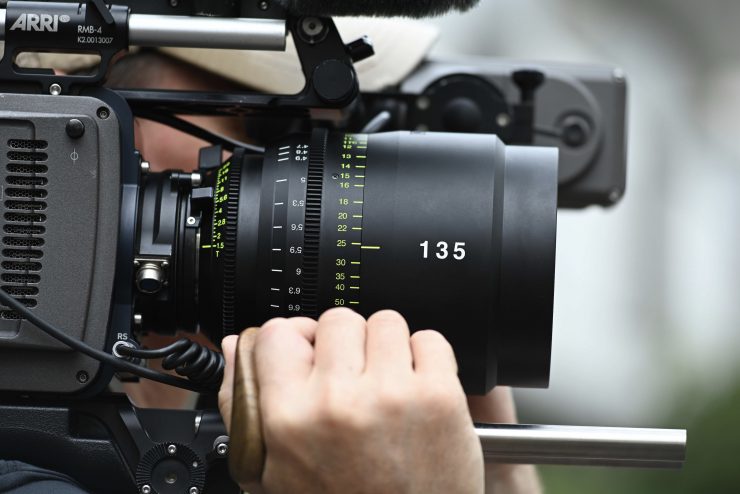
The 135mm is tack sharp (even wide open), has no chromatic aberration, and produces beautiful bokeh. There is no noticeable focus breathing and the mechanics of the lens are excellent.
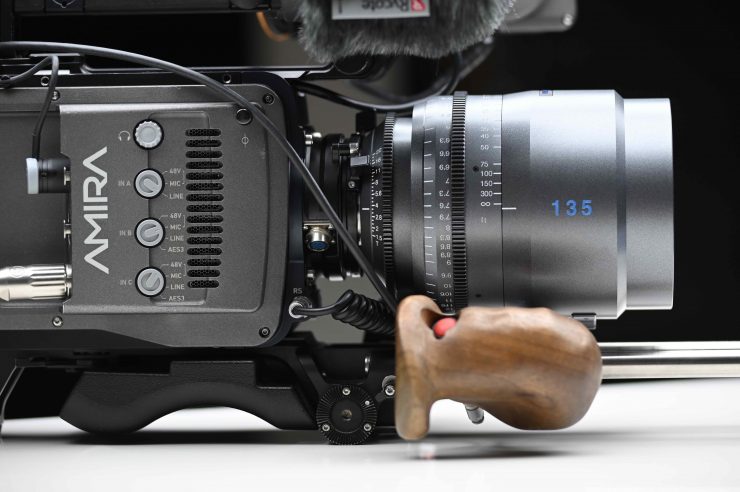
The lens is big and it’s heavy and you really do need to take those factors into account if you want to purchase one. Is it a lens for everyone? No, it’s not. Buying full-frame glass is almost always going to set you back a lot more money, but that initial investment is probably going to be more of a benefit when looking towards the future. This lens is squarely being aimed at high-end owner/operators and rental houses.
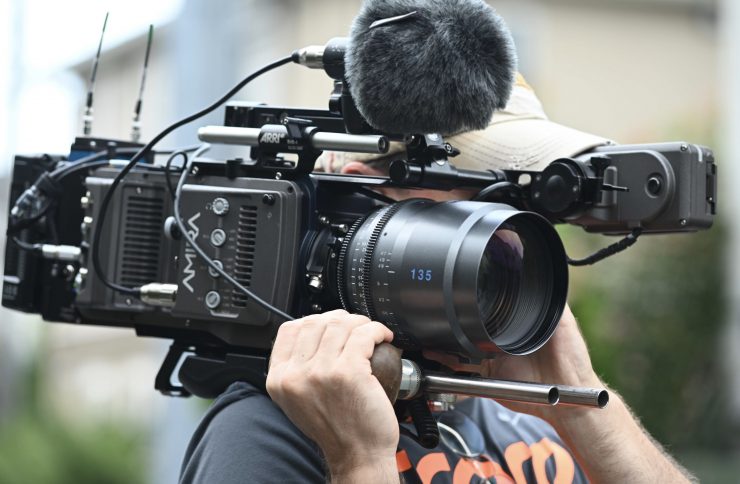
I don’t for one second think that Super 35mm glass is going to become obsolete, but purchasing a lens that covers full-frame and larger sensors certainly provides you with more flexibility. The 135mm T1.5 is another outstanding offering from Tokina.
Like what we do and want to support Newsshooter? Consider becoming a Patreon supporter and help us to continue being the best source of news and reviews for professional tools for the independent filmmaker.

